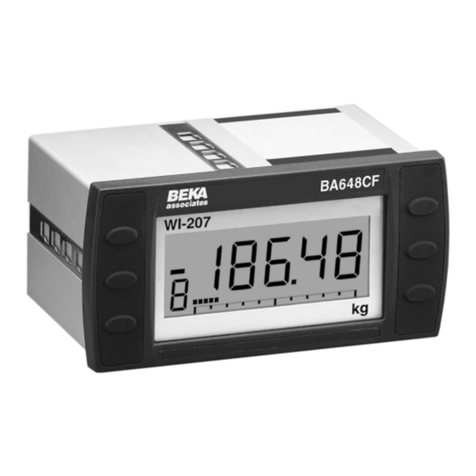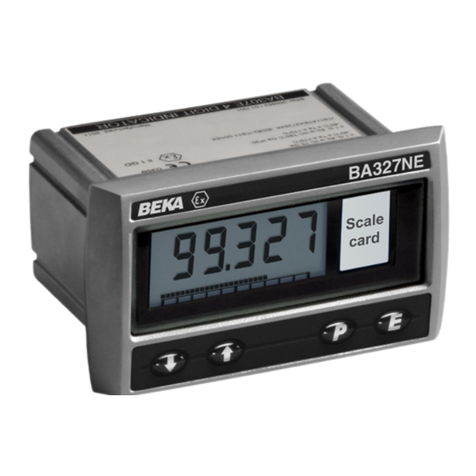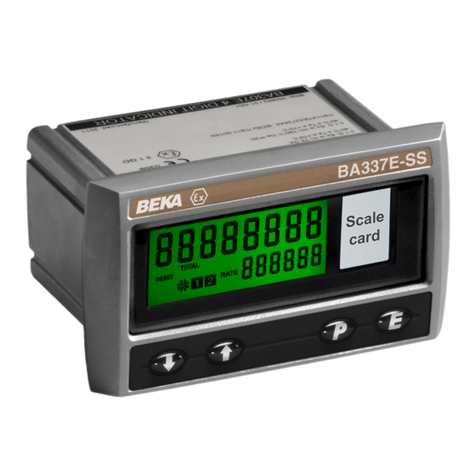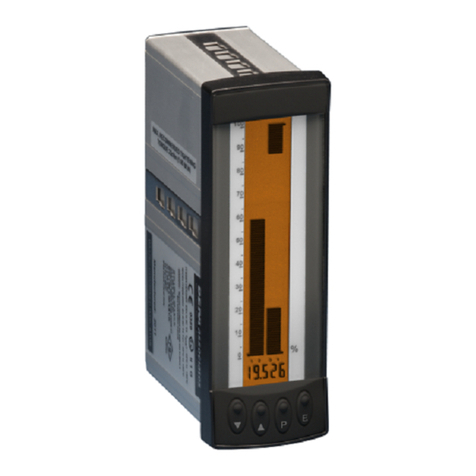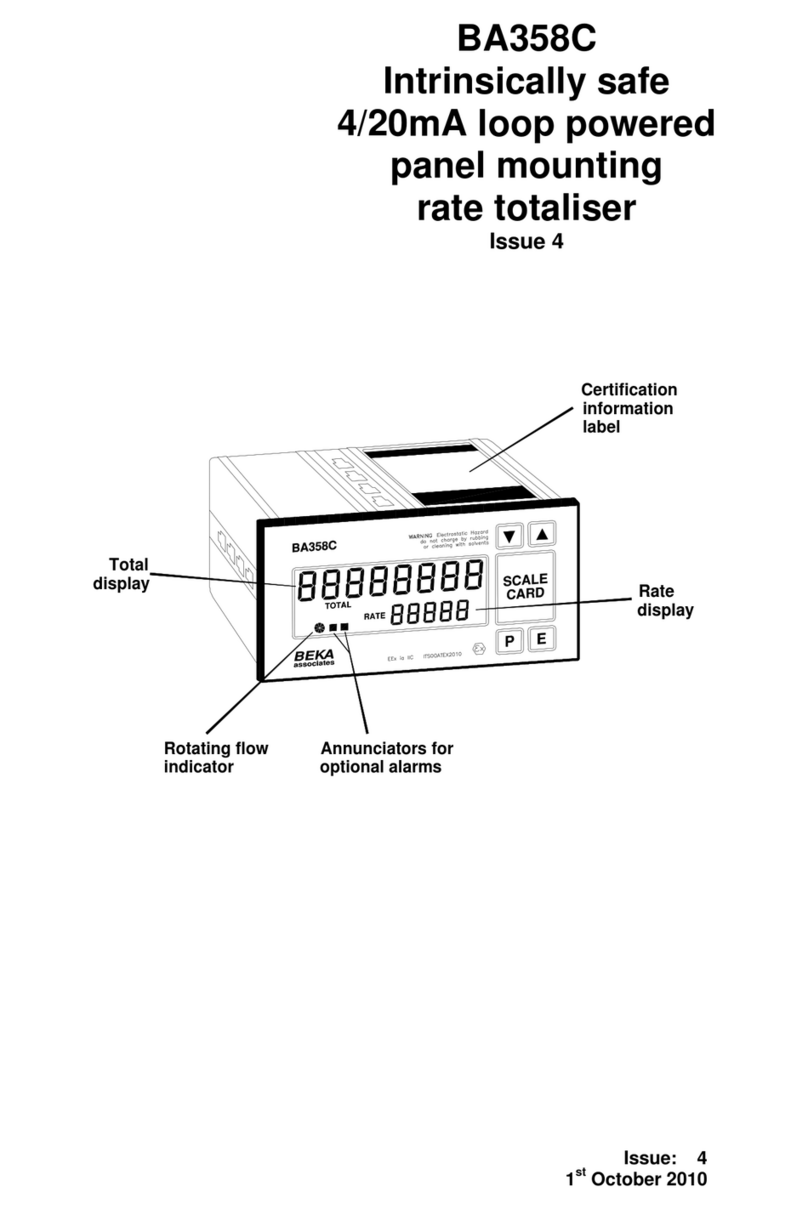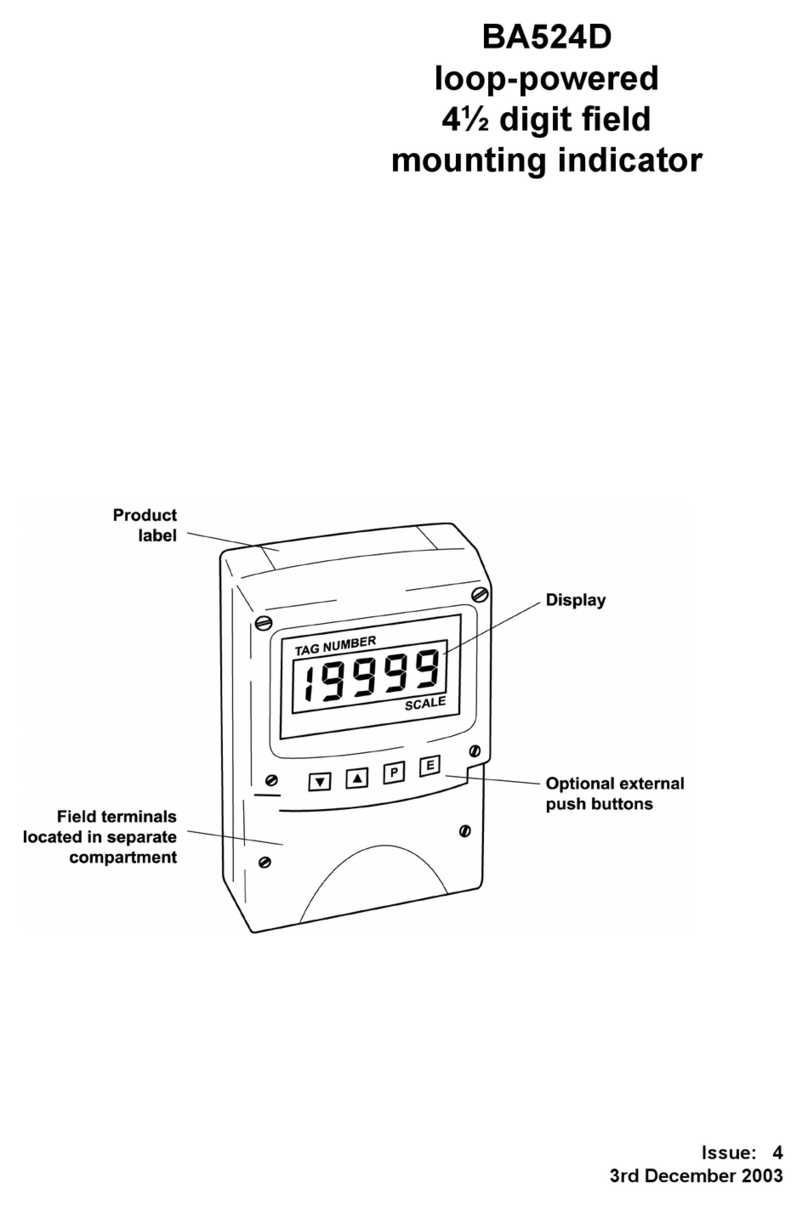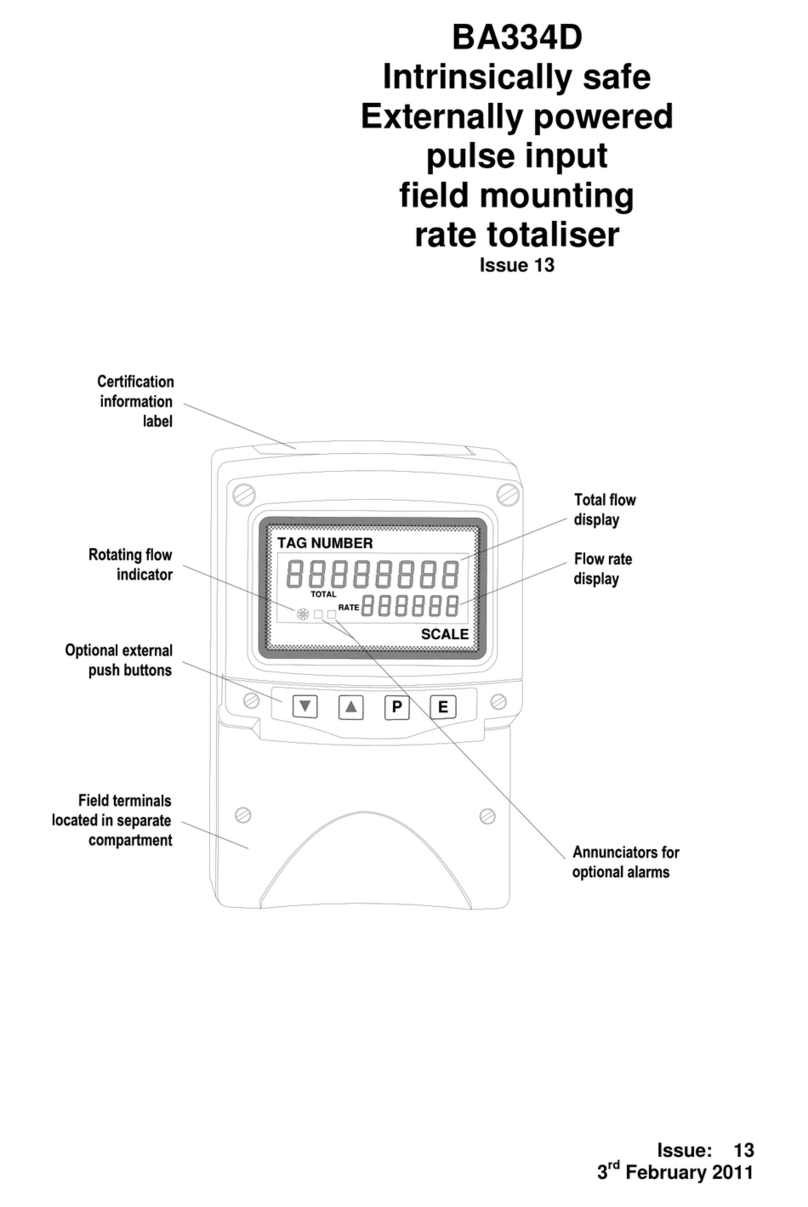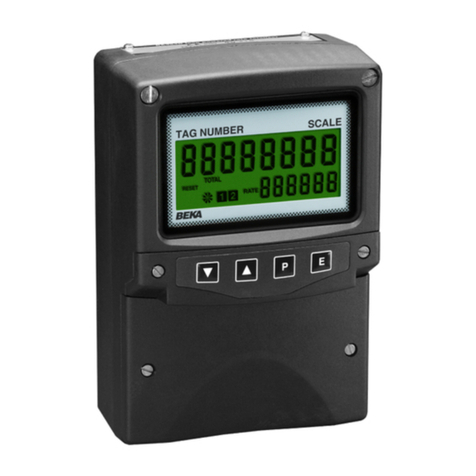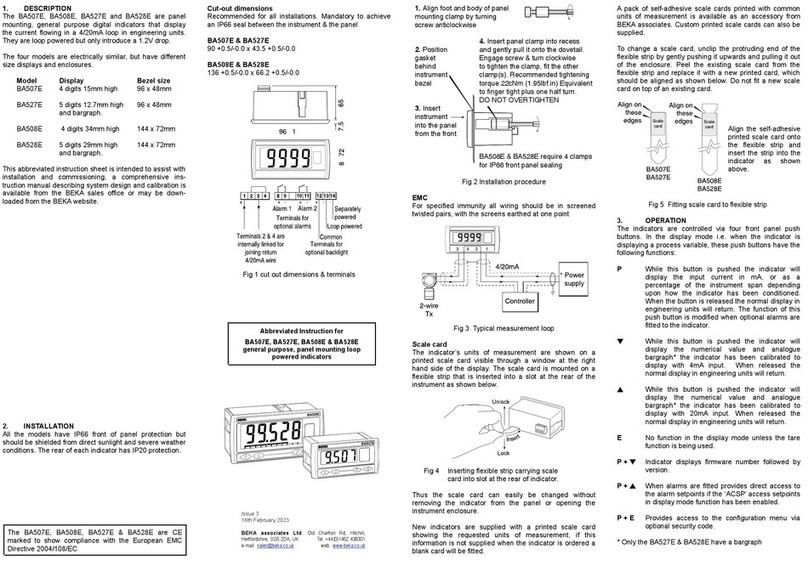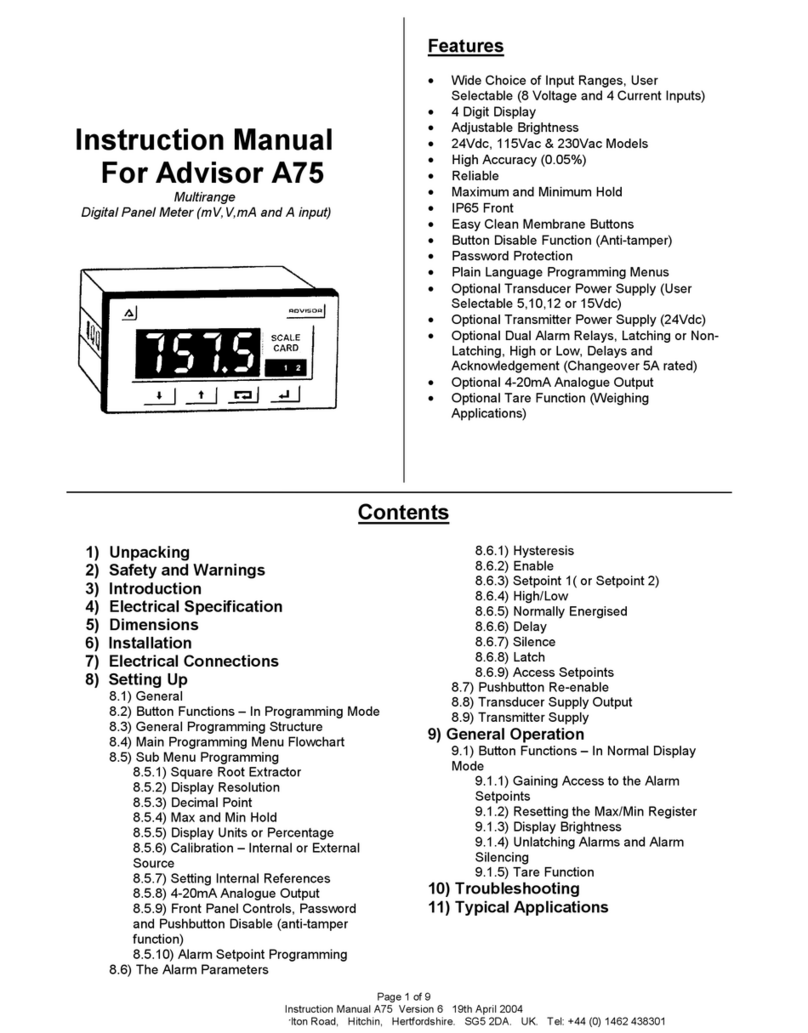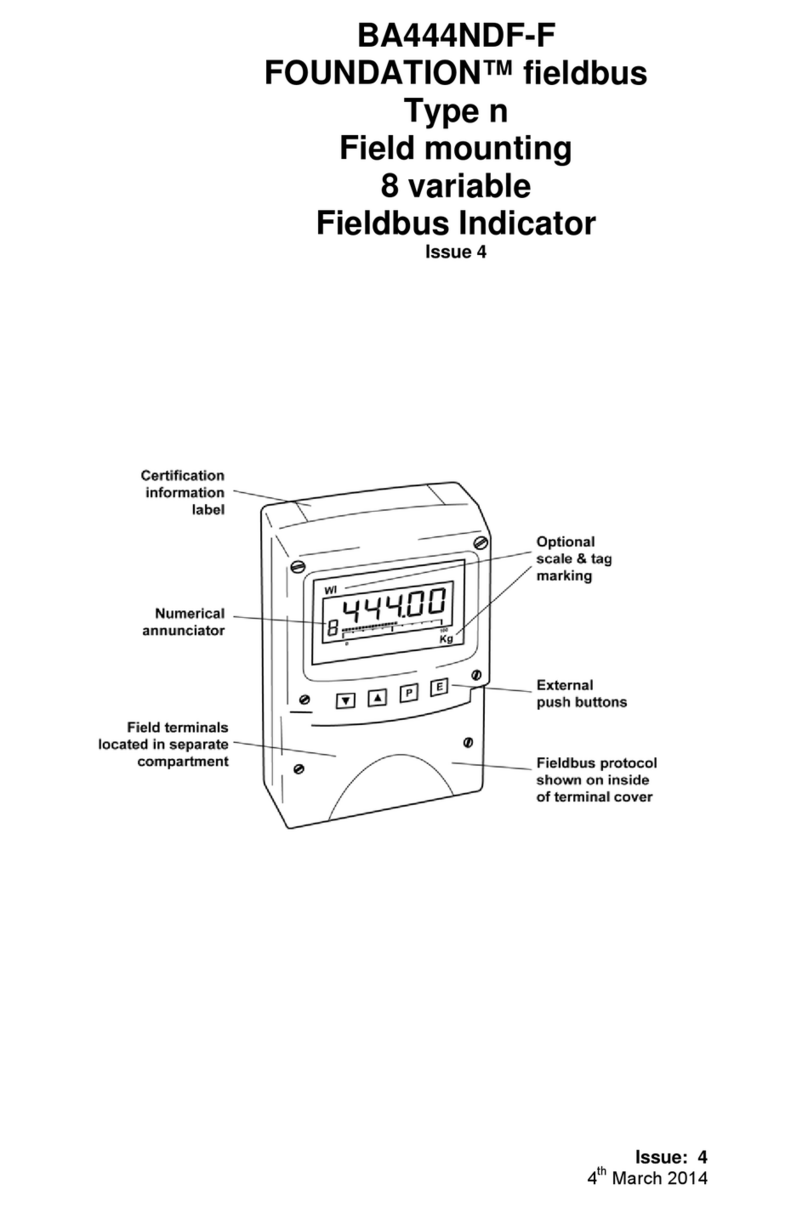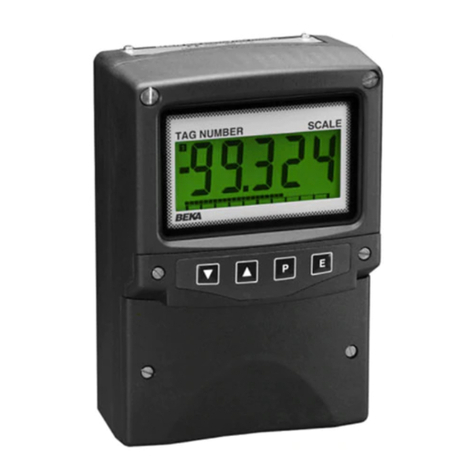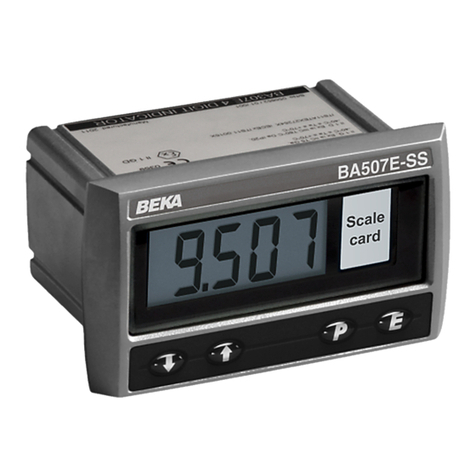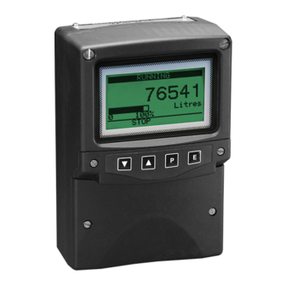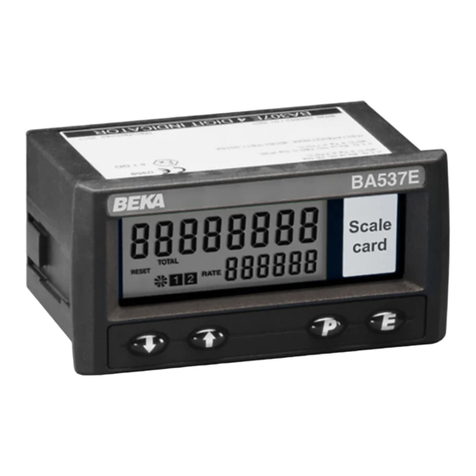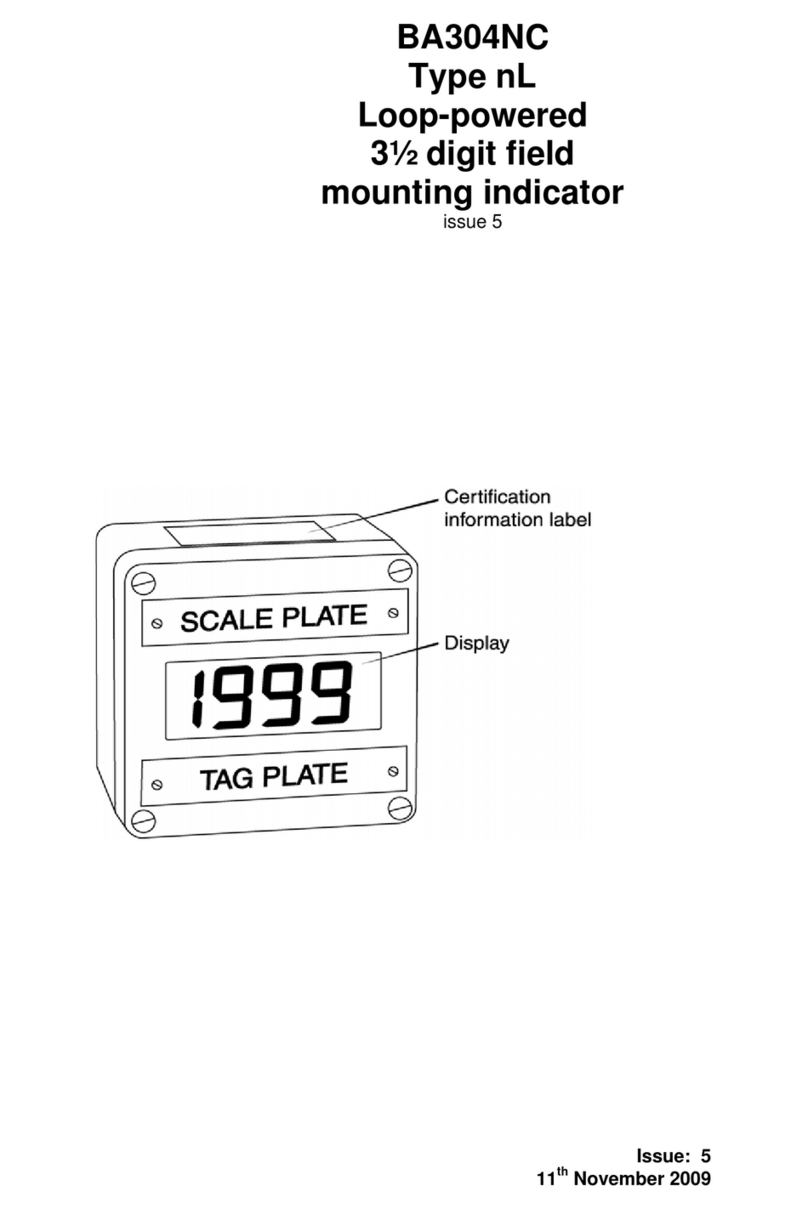
2.1 Controls
The indicators are controlled and calibrated via four
front panel push buttons located below the display.
In the display mode i.e. when the indicator is
displaying a process variable, these push buttons
have the following functions:
PWhile this button is pushed the indicator
will display the input current in mA, or as a
percentage of the instrument span
depending upon how the indicator has
been conditioned. When the button is
released the normal display in engineering
units will return. The function of this push
button is modified when optional alarms
are fitted to the indicator.
▼While this button is pushed the indicator
will display the numerical value and
analogue bargraph* the indicator has been
calibrated to display with a 4mAΦinput.
When released the normal display in
engineering units will return.
▲While this button is pushed the indicator
will display the numerical value and
analogue bargraph* the indicator has been
calibrated to display with a 20mAΦinput.
When released the normal display in
engineering units will return.
ENo function in the display mode unless the
tare function is being used.
P + ▼Firmware number followed by version.
P + ▲Direct access to the alarm setpoints when
optional alarms are fitted to the indicator
and the ‘ACSP’ access setpoints in display
mode function has been enabled.
P + E Access to configuration menu via optional
security code.
Note: * BA327E-SS only
ΦIf the indicator has been calibrated
using the CAL function, calibration
points may not be 4 and 20mA.
3. INTRINSIC SAFETY CERTIFICATION
Both indicators have ATEX and IECEx gas and dust
certification. This section of the instruction manual
describes ATEX gas certification. ATEX dust and
IECEx approvals are described in Appendixes 1 and 2.
3.1 ATEX gas certification
Both models have been issued with common
EC-Type Examination Certificate
ITS14ATEX28077X by Notified Body Intertek
Testing and Certification Ltd. This confirms
compliance with harmonised European standards
and has been used to confirm compliance with the
European ATEX Directive for Group II, Category
1G equipment.
The indicators bear the community mark and
subject to local codes of practice may be installed
in any of the European Economic Area (EEA)
member countries. ATEX certificates are also
acceptable for installations in Switzerland.
This section of the instruction manual describes
ATEX installations in explosive gas atmospheres
conforming with EN 60079-14 Electrical
Installations design, selection and erection. When
designing systems for installation outside the UK
the local Code of Practice should be consulted.
3.2 Zones, gas groups and T rating
The indicators have been certified Ex ia IIC T5
Ta = -40ºC to 70ºC. When connected to a suitable
system the indicator may be installed in:
Zone 0 explosive gas air mixture
continuously present.
Zone 1 explosive gas air mixture likely
to occur in normal operation.
Zone 2 explosive gas air mixture not
likely to occur, and if it does
will only exist for a short time.
Be used with gases in groups:
Group A propane
Group B ethylene
Group C hydrogen
In gases that may be used with equipment having
a temperature classification of:
T1 450oC
T2 300oC
T3 200oC
T4 135oC
T5 100oC
At ambient temperatures between -40 and +70oC.
This allows the indicators to be installed in all gas
Zones and to be used with most common industrial
gases.
4












